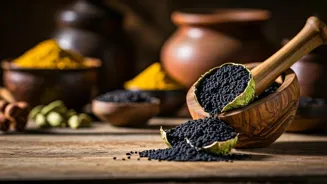Unveiling the Secrets of Animals in Ayurveda: A Fascinating Dive into Indian Traditional Medicine. Read on for intriguing insights!
For centuries, Ayurveda, Siddha, and other Indian traditional medicine
systems have looked towards nature's pharmacy for healing. Animals, surprisingly, play a crucial part in this. Their contributions go beyond just milk and honey.
From strengthening remedies to unique therapeutic practices, the animal kingdom has been quietly involved in India's age-old healthcare practices. Here, we reveal seven key insights into this often-unseen bond:
Animals as Sources of Precious Ingredients
Many Ayurvedic formulations depend on ingredients derived from animals. These aren't random additions; they are carefully selected for their specific curative properties. Consider 'Ghee,' clarified butter made from cow's milk, treasured for its enhancing digestion.

It also aids in better absorption of nutrients. It is used in various ailments from skin problems to boosting immunity. Then there's 'Madhu' or honey, praised for its expectorant and wound-healing qualities. 'Laksha,' derived from the lac insect, plays a role in skin health and wound management.
These components, ethically sourced, hold a significant spot in building many medicinal remedies. They are an integral aspect of holistic healing.
Therapeutic Applications in Mental Wellbeing
The role of animals extends into the treatment of mental and emotional issues. While not necessarily involving ingesting animal products, certain practices encourage interaction with animals to promote calmness and regulate emotions.

For example, keeping pets like gentle dogs or cats is believed to create a soothing environment. These pets can reduce stress and lift feelings of depression. The calming presence of animals helps in emotional regulation.
Traditional healers prescribe time with farm animals like cows, as being in close proximity can be therapeutic. Ancient texts often explain the benefit of bonding with animals.
Animals in Diagnostics
Traditionally, animals played a surprising role in the diagnosis of ailments. Experts often based their diagnosis on observing an animal’s response to a person's breath, urine, or sweat. It helps to get insights into the patient’s condition.

This method, though not widespread now, highlights the close and complex relationship between humans and animals. It shows how animals were deemed perceptive in sensing subtle changes indicating illness. One would not see this sort of diagnostic method used in modern treatment.
This practice also speaks volumes about the emphasis on detailed observation in traditional medicine.
Ethical Considerations in Sourcing
One cannot ignore the ethical complexities surrounding the use of animal products in traditional medicine. Authenticity insists that the process needs to be sustainable. Emphasis on ethical sourcing is not a recent trend. It has been an inherent part of the system from inception.
Ancient texts explicitly outline guidelines for the humane treatment of animals. It emphasizes procuring ingredients without causing harm. This ensures respect for their life and contribution. Sustainable practices are slowly making a come back as people are more aware of the environmental impact.
Livestock as a Source of Immunity
In rural Indian societies, livestock plays an indirect yet important role in improving the quality of life and immunity. Dairy farms that house cows and farm animals play a part in village life. Access to fresh milk and other products boosts the health and immune system of the local community.

This accessibility promotes proper nutrition and contributes to immunity. Apart from fresh dairy products, cow dung holds an important place in the homes. It is used for cleaning and in the making of other ingredients. This is what makes livestock important for Indian traditional medicine.
Unique Animal-Based Therapies
Certain lesser-known therapies involve direct interaction with animals for healing. For example, traditional healers use leech therapy for bloodletting. This is mainly done to deal with skin ailments or to reduce inflammation. Application of leech helps to purify blood and improve circulation.
The process involves placing leeches on the affected area. This therapy, while not common today, exemplifies the diverse methods employed. It incorporates elements from the animal kingdom.
Another unusual method includes utilizing snake venom in highly diluted dosages to provide remedy for specific ailments. This is carefully administered by specialized practitioners.
Ancient texts on animal use: Most of our information comes from ancient texts. They detail the usage of animals in Indian medicine. The Charaka Samhita and Sushruta Samhita explain the healing practices. These writings offer insights into the properties of ingredients. The ancient wisdom provides a detailed understanding of preparation and usage. The texts also talk about the important aspects of ensuring an ethical interaction with animals. Modern researchers are now referencing these ancient texts. They explore the potential of animal-derived medicines.
The bond between animals and Indian traditional medicine is deep and interwoven. The insights discussed here reflect the complexity and the various facets of this association. As we move forward, we must bring traditional knowledge with ethical and sustainable practices.
This will help us in exploring the full potential of this deep-rooted system of healing. It will also protect our natural environment. The key lies in maintaining a respectful approach. This would be aimed at ensuring both human and animal welfare.









